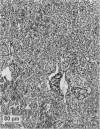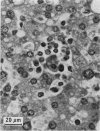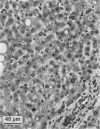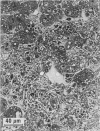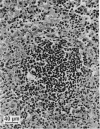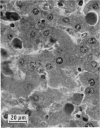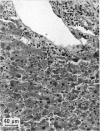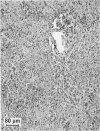Abstract
Pathological findings have been described in only a small number of cases of Lassa fever since the virus was first isolated in 1969. Morphologically, eosinophilic necrosis of hepatocytes was the most frequent finding and focal necroses, often extensive, were present in most cases. These findings are similar to the lesions previously described in Argentinian and Bolivian haemorrhagic fever. Focal interstitial pneumonitis, focal tubular necrosis in the kidney, lymphocytic infiltration of the splenic veins, and partial replacement of the splenic follicles by amorphous eosinophilic material have been described, but the significance of these findings is unclear. More detailed and sophisticated investigations are required in the future if pathogenetic mechanisms are to be unravelled.
Full text
PDF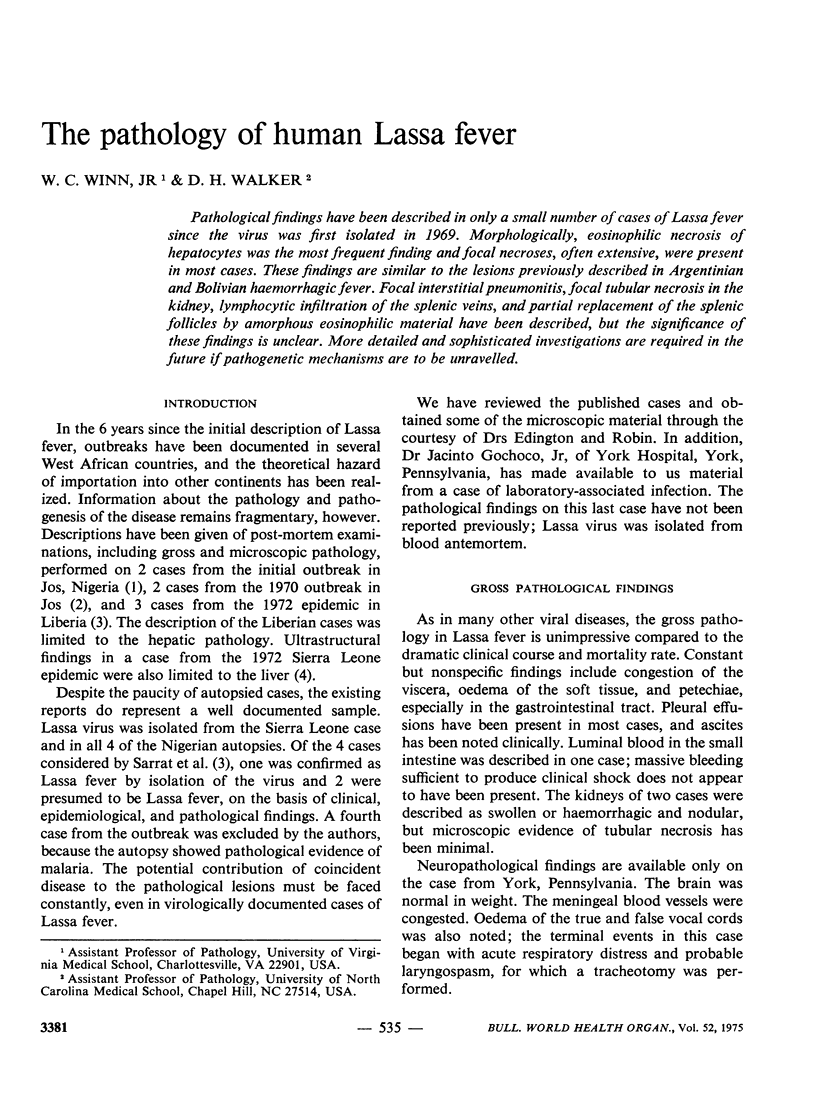
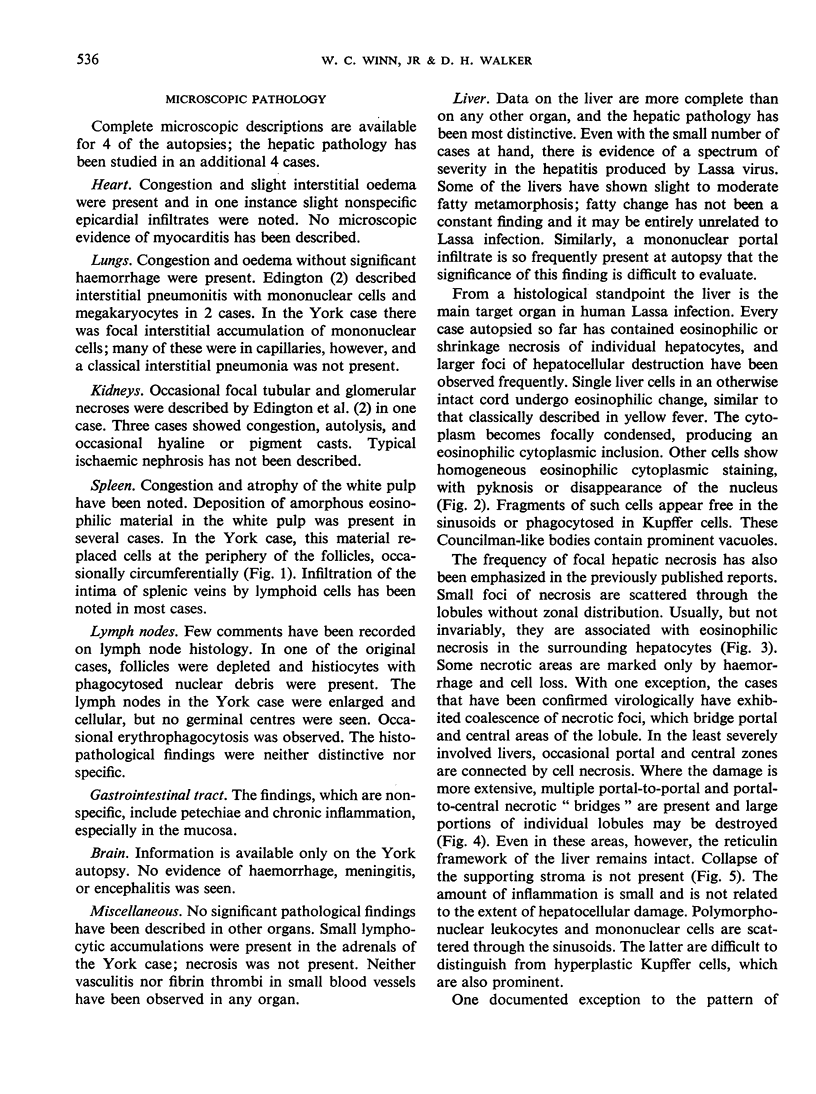
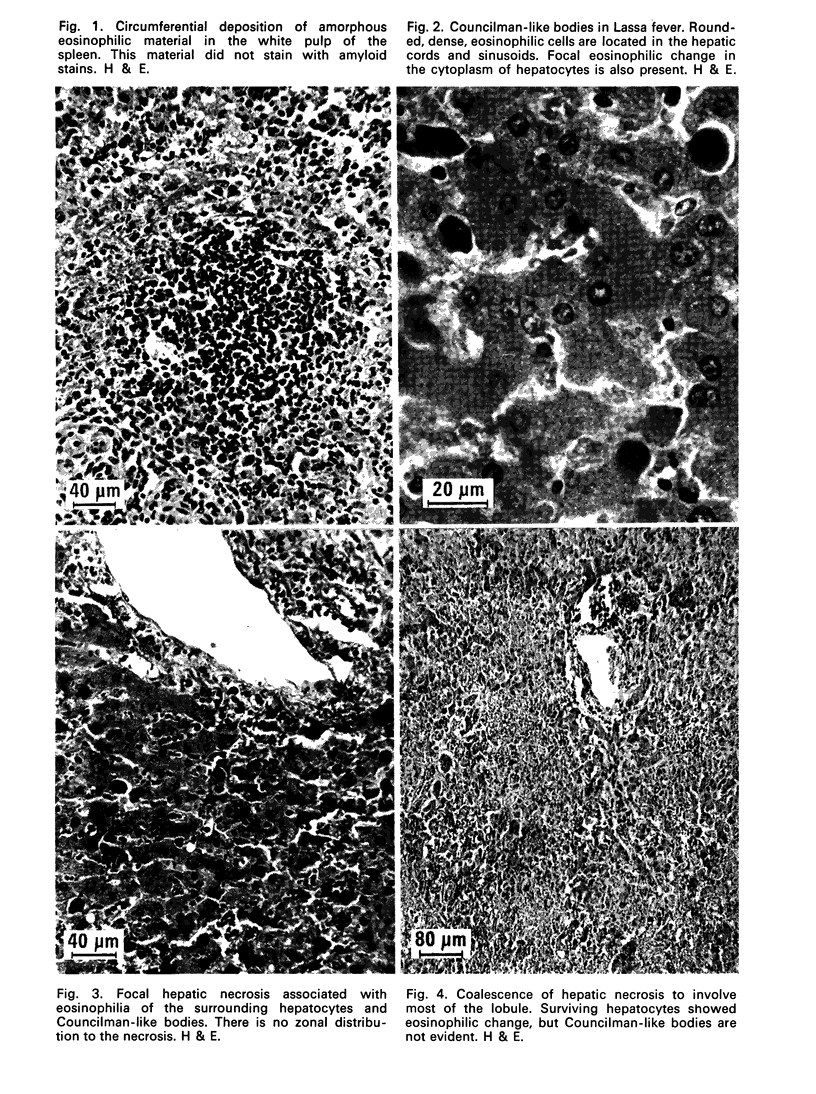
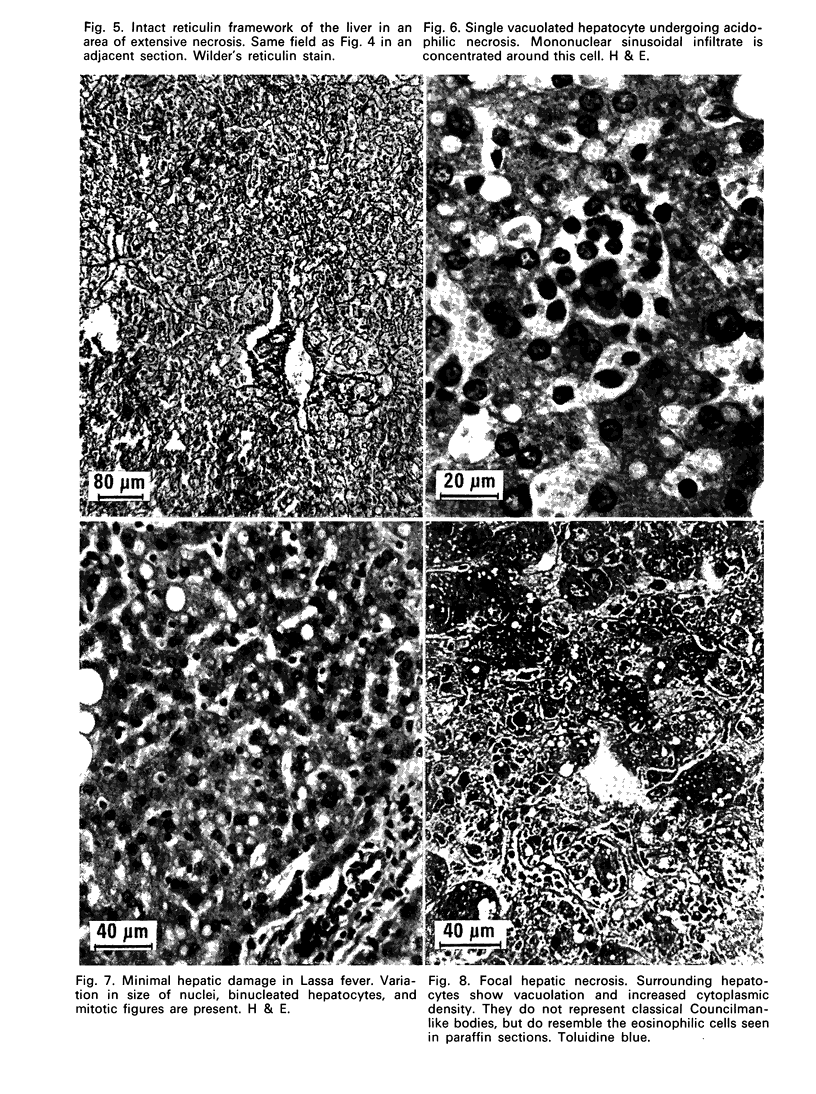
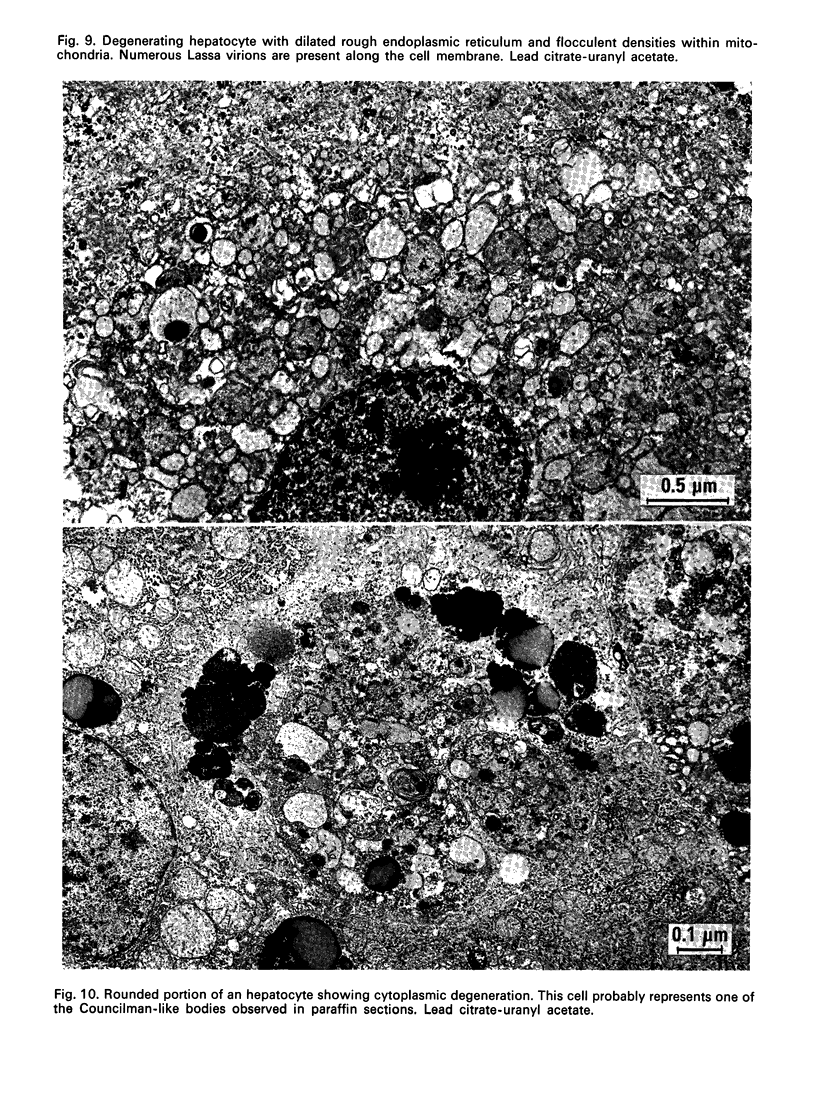
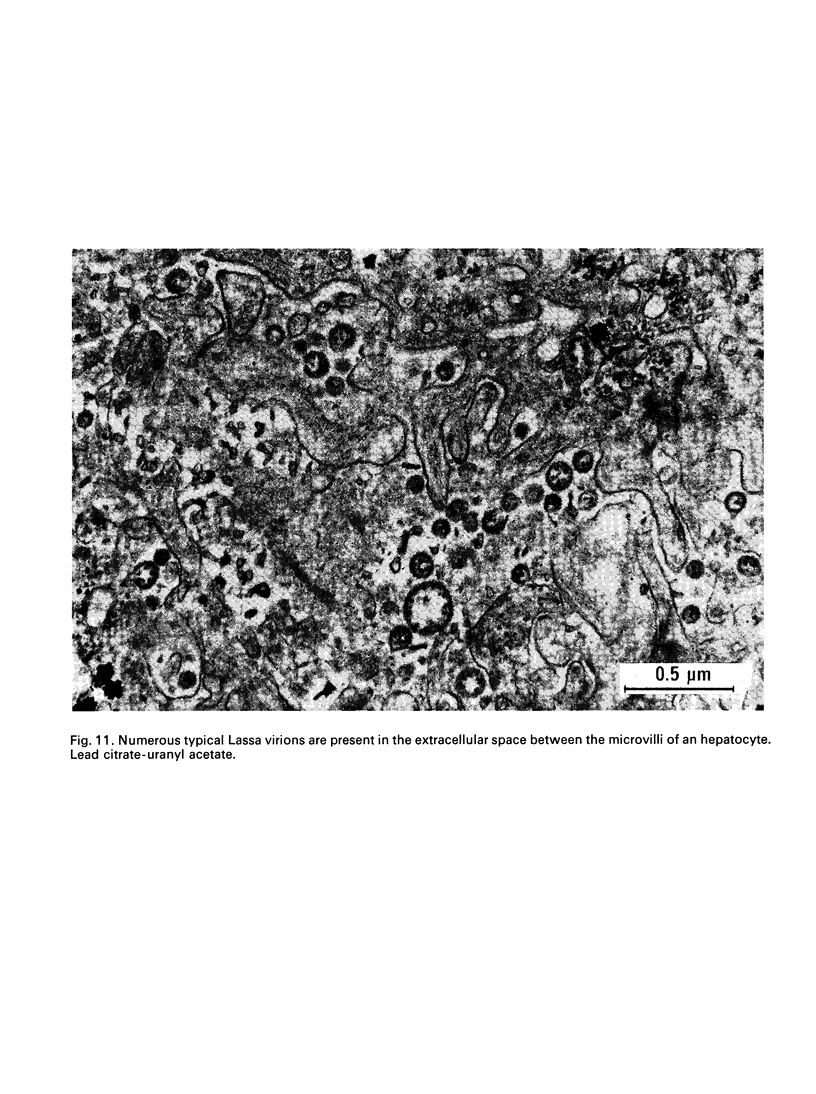
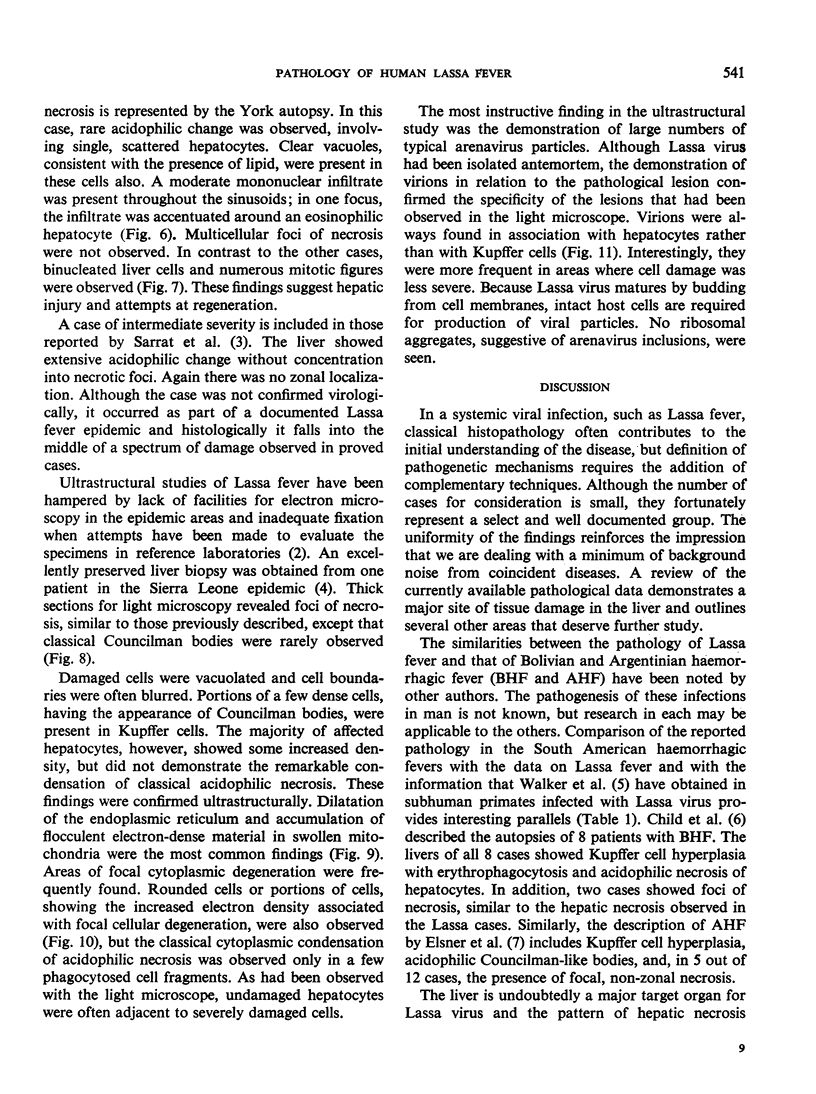
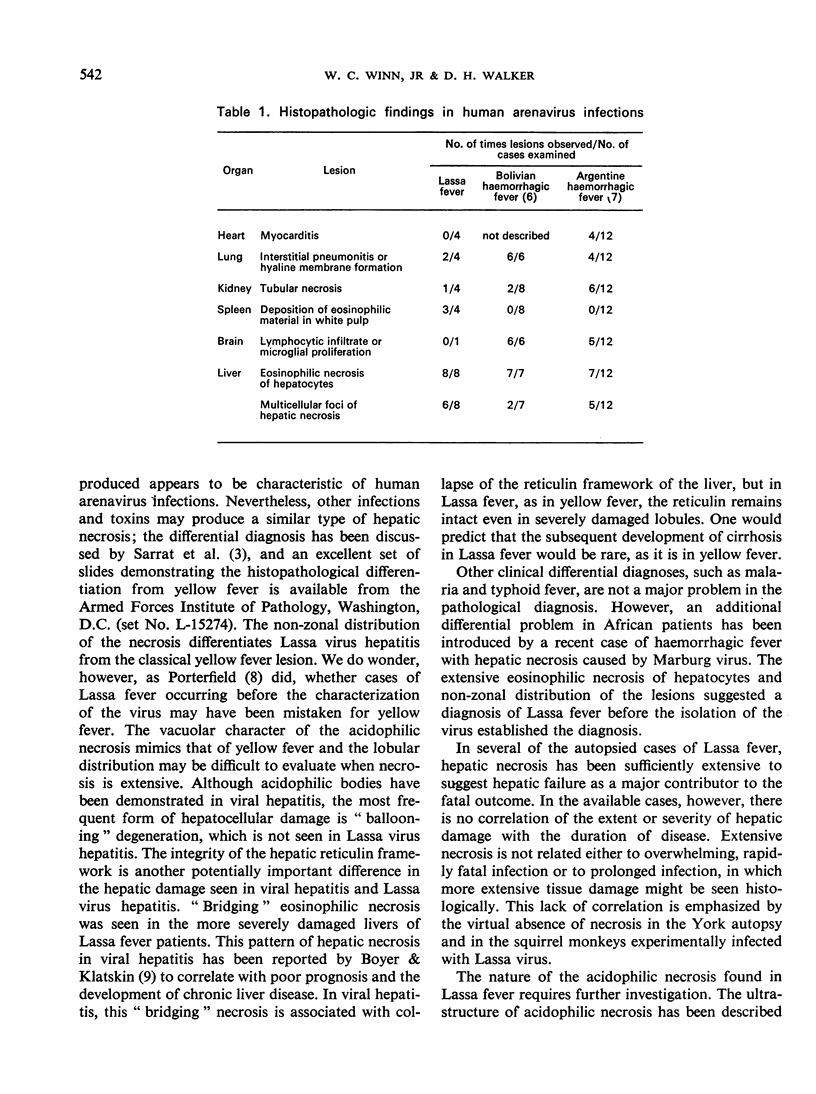
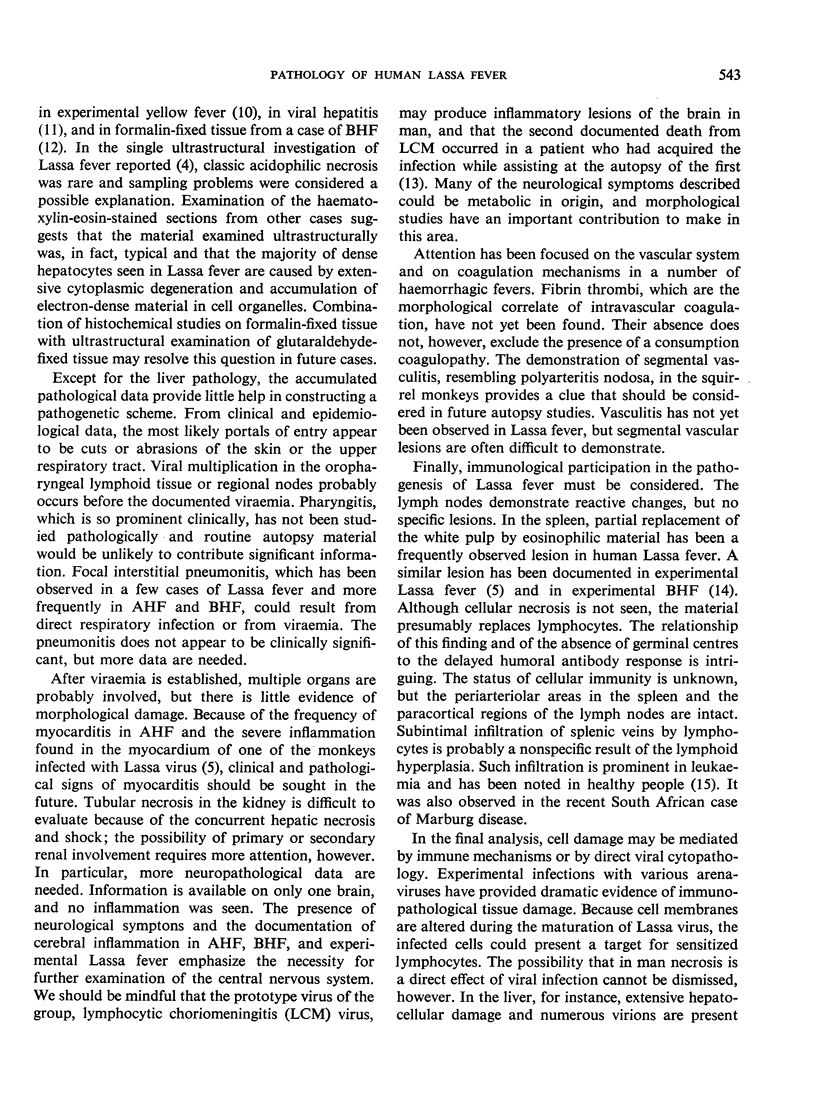
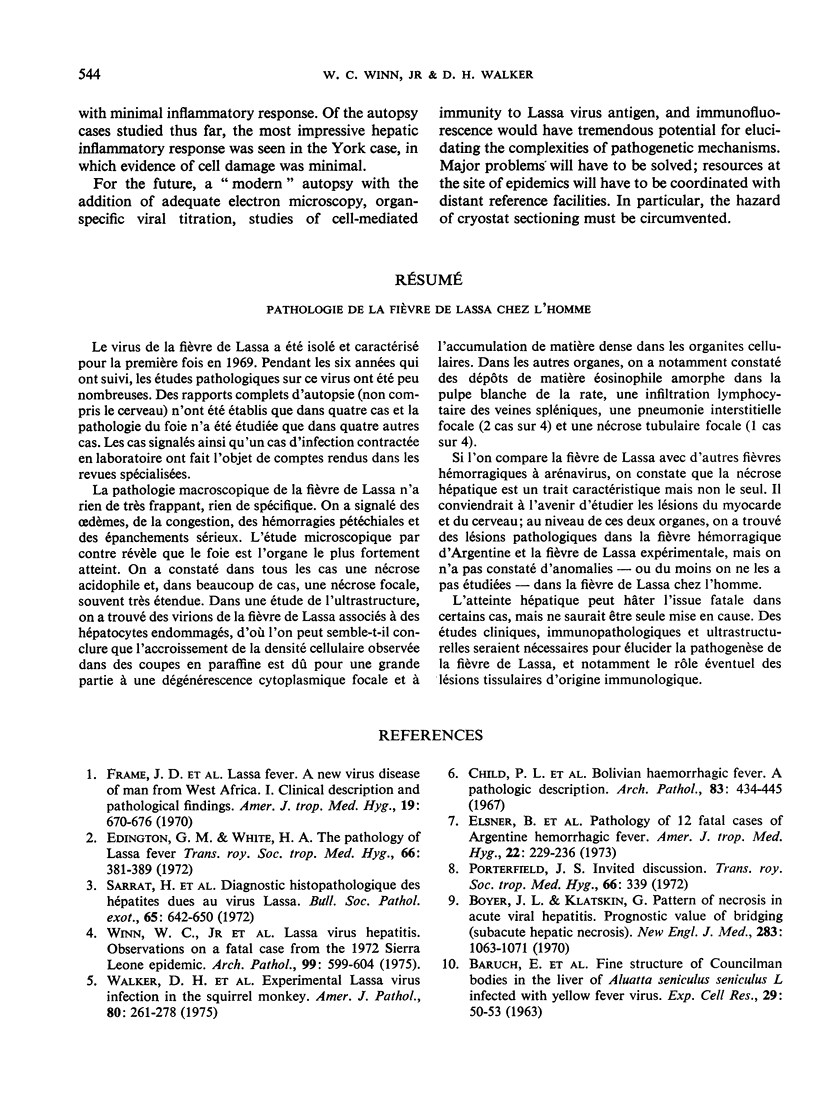
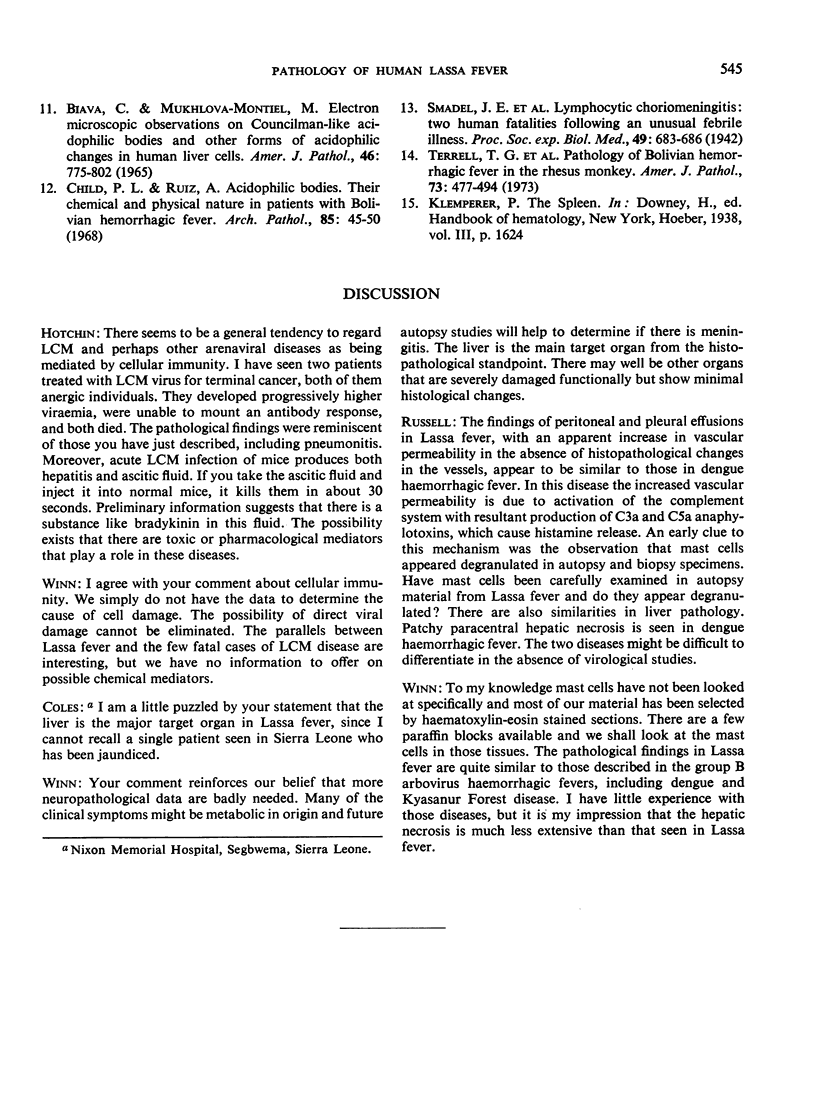
Images in this article
Selected References
These references are in PubMed. This may not be the complete list of references from this article.
- BARUCH E., CARBONELL L., WEIBEL J. Fine structure of Councilman bodies in the liver of Aluatta seniculus seniculus L. infected with yellow fever virus. Exp Cell Res. 1963 Jan;29:50–53. doi: 10.1016/0014-4827(63)90356-2. [DOI] [PubMed] [Google Scholar]
- Biava C., Mukhlova-Montiel M. Electron Microscopic Observations on Councilman-Like Acidophilic Bodies and Other Forms of Acidophilic Changes in Human Liver Cells. Am J Pathol. 1965 May;46(5):775–802. [PMC free article] [PubMed] [Google Scholar]
- Boyer J. L., Klatskin G. Pattern of necrosis in acute viral hepatitis. Prognostic value of bridging (subacute hepatic necrosis). N Engl J Med. 1970 Nov 12;283(20):1063–1071. doi: 10.1056/NEJM197011122832001. [DOI] [PubMed] [Google Scholar]
- Child P. L., MacKenzie R. B., Valverde L. R., Johnson K. M. Bolivian hemorrhagic fever. A pathologic description. Arch Pathol. 1967 May;83(5):434–445. [PubMed] [Google Scholar]
- Child P. L., Ruiz A. Acidophilic bodies. Their chemical and physical nature in patients with Bolivian hemorrhagic fever. Arch Pathol. 1968 Jan;85(1):45–50. [PubMed] [Google Scholar]
- Edington G. M., White H. A. The pathology of Lassa fever. Trans R Soc Trop Med Hyg. 1972;66(3):381–389. doi: 10.1016/0035-9203(72)90268-4. [DOI] [PubMed] [Google Scholar]
- Elsner B., Schwarz E., Mando O. G., Maiztegui J., Vilches A. Pathology of 12 fatal cases of Argentine hemorrhagic fever. Am J Trop Med Hyg. 1973 Mar;22(2):229–236. [PubMed] [Google Scholar]
- Frame J. D., Baldwin J. M., Jr, Gocke D. J., Troup J. M. Lassa fever, a new virus disease of man from West Africa. I. Clinical description and pathological findings. Am J Trop Med Hyg. 1970 Jul;19(4):670–676. doi: 10.4269/ajtmh.1970.19.670. [DOI] [PubMed] [Google Scholar]
- Sarrat H., Camain R., Baum J., Robin Y. Diagnostic histopathologique des hépatites dues au virus Lassa. Bull Soc Pathol Exot Filiales. 1972 Sep-Oct;65(5):642–650. [PubMed] [Google Scholar]
- Terrell T. G., Stookey J. L., Eddy G. A., Kastello M. D. Pathology of Bolivian hemorrhagic fever in the rhesus monkey. Am J Pathol. 1973 Nov;73(2):477–494. [PMC free article] [PubMed] [Google Scholar]
- Walker D. H., Wulff H., Murphy F. A. Experimental Lassa virus infection in the squirrel monkey. Am J Pathol. 1975 Aug;80(2):261–278. [PMC free article] [PubMed] [Google Scholar]



